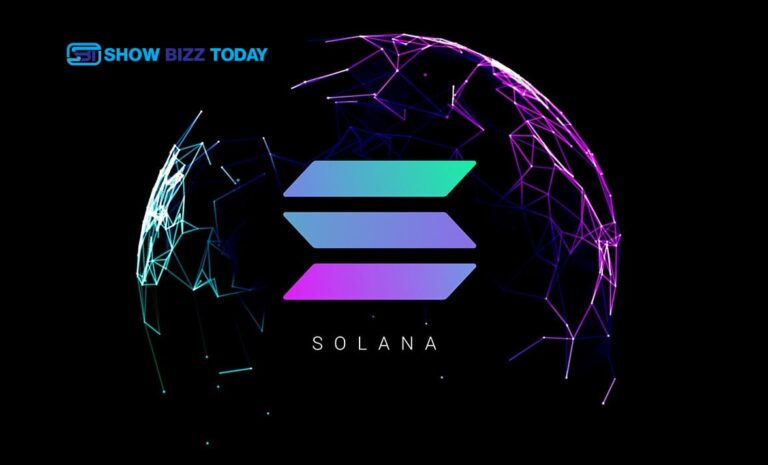presentation
Solana has rapidly emerged as one of the most promising blockchain platforms, offering a unique blend of scalability, speed, and security. Designed to support high-performance decentralized applications (dApps), Solana is a game-changer in the blockchain space. This article dives deep into what makes Solanas stand out, its architecture, use cases, and future potential.
What is Solana?
Solana is a high-performance blockchain platform created to support decentralized applications and crypto projects. Launched in March 2020 by Solanas Labs, the platform’s primary goal is to offer scalable, fast, and secure blockchain solutions without compromising decentralization.
Key Features of Solana
Solana’s blockchain offers several unique features that set it apart:
High Throughput: Solana can process over 65,000 transactions per second (TPS), making it one of the fastest blockchains in the world.
Low Transaction Costs: The platform maintains a low transaction cost, averaging around $0.00025 per transaction, which is significantly lower than many other blockchains.
Scalability: Solana uses a unique consensus mechanism that ensures scalability without needing layer-2 solutions.
Security: Despite its speed and scalability, Solana ensures a high level of security through its unique consensus model.
The Technology Behind Solana
Solana’s technological backbone consists of several innovative components that enable its high performance and scalability.
Proof of History (PoH)
One of Solana’s standout features is its consensus mechanism, Proof of History (PoH). PoH is a cryptographic clock that provides a unique timestamp for transactions, allowing for high throughput and more efficient validation of transactions.
Tower BFT
Tower BFT is Solana’s implementation of a Byzantine Fault Tolerant (BFT) consensus algorithm that builds on PoH. It ensures that the network reaches consensus despite failures or malicious nodes, enhancing security and reliability.
Sealevel
Sealevel is Solana’s parallel smart contract runtime. Unlike other blockchains that process transactions sequentially, Sealevel allows Solana to process thousands of smart contracts simultaneously, boosting its transaction speed.
Turbine
Turbine is Solana’s block propagation protocol that breaks data into smaller packets for faster transmission across nodes. This design reduces bandwidth issues and enhances network efficiency.
Solana’s Ecosystem
Solana’s robust ecosystem includes a wide range of dApps, DeFi platforms, NFT marketplaces, and more. Here are some of the key components of its ecosystem:
DeFi Projects
Solana supports numerous decentralized finance (DeFi) projects, offering users a platform for lending, borrowing, and trading cryptocurrencies without intermediaries. Projects like Serum, Raydium, and Mango Markets are prominent players in Solana’s DeFi space.
NFT Marketplaces
The platform has become a hotspot for non-fungible tokens (NFTs), with marketplaces like Solanart, Magic Eden, and Metaplex gaining traction. These marketplaces offer a low-cost, high-speed alternative to Ethereum-based NFT platforms.
Web3 Applications
Solana is also powering various Web3 applications, which aim to decentralize the internet and offer users greater control over their data. Applications in this space range from decentralized social media platforms to blockchain-based gaming.
Use Cases of Solana
The versatility of Solana allows for a wide range of applications across different industries.
Financial Services
Solana’s low transaction costs and high speed make it an ideal platform for financial services, including cross-border payments, lending, and asset management. Its DeFi ecosystem is a testament to its potential in revolutionizing traditional finance.
Gaming
Blockchain gaming is another area where Solana is making significant strides. Games built on Solana benefit from fast transaction speeds and low fees, providing a seamless gaming experience.
Supply Chain Management
Solana can also be used in supply chain management to enhance transparency and traceability. Its blockchain can record every transaction in the supply chain, ensuring all stakeholders have real-time access to data.
Identity Management
With growing concerns about data privacy, Solana offers solutions for secure identity management. Users can maintain control over their personal data while leveraging blockchain’s security features.
The Future of Solana
Solana’s future looks promising, with continuous developments and growing adoption. As more developers and enterprises recognize its potential, the platform is likely to see increased use cases and integrations.
Upcoming Developments
Solana Labs and the broader community are continually working on improving the platform. Future updates may focus on further enhancing scalability, security, and user experience.
Expanding Ecosystem
As the ecosystem expands, more dApps, DeFi projects, and NFT marketplaces are expected to join, offering users a wider array of services and applications.
Challenges and Competitors
Despite its advantages, Solana faces challenges, including competition from other blockchain platforms like Ethereum, Binance Smart Chain, and Avalanche. Additionally, the network has experienced some outages, raising concerns about its reliability.
Conclusion
Solana is undoubtedly one of the most exciting developments in the blockchain world, offering a unique combination of speed, scalability, and low costs. Its innovative technology and expanding ecosystem position it as a strong contender in the race to power the next generation of decentralized applications


